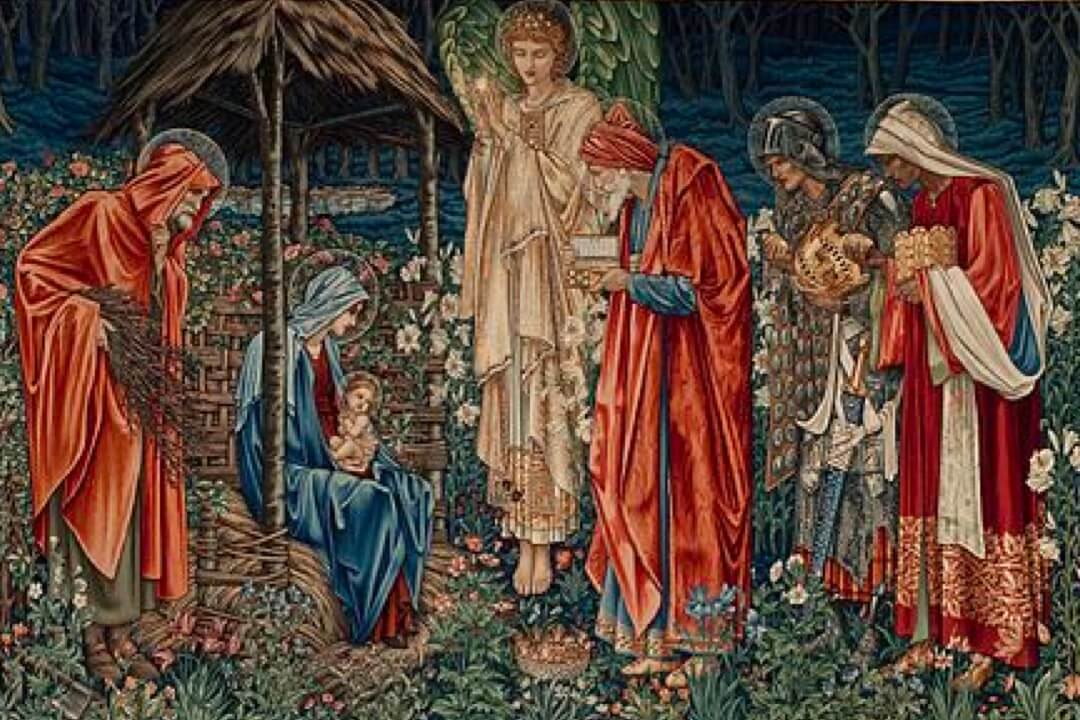Alias
Baptism of Jesus, Three Kings Day, Denha, Little Christmas, Theophany, Timkat, Reyes
Introduction
Epiphany , also known as Theophany in Eastern Christian traditions, is a Christian feast day that celebrates the revelation (theophany) of God incarnate as Jesus Christ.
In Western Christianity, the feast commemorates principally (but not solely) the visit of the Magi to the Christ Child, and thus Jesus Christ's physical manifestation to the Gentiles.It is sometimes called Three Kings' Day, and in some traditions celebrated as Little Christmas.Moreover, the feast of the Epiphany, in some denominations, also initiates the liturgical season of Epiphanytide.
Eastern Christians, on the other hand, commemorate the baptism of Jesus in the Jordan River, seen as his manifestation to the world as the Son of God.The spot marked by Al-Maghtas in Jordan, adjacent to Qasr al-Yahud in the West Bank, is considered to be the original site of the baptism of Jesus and the ministry of John the Baptist.
The traditional date for the feast is January 6. However, since 1970, the celebration is held in some countries on the Sunday after January 1. Those Eastern Churches which are still following the Julian calendar observe the feast on what, according to the internationally used Gregorian calendar, is January 19,because of the current 13-day difference between the Julian and Gregorian calendars.
In many Western Churches, the eve of the feast is celebrated as Twelfth Night (Epiphany Eve). The Monday after Epiphany is known as Plough Monday.
Popular Epiphany customs include Epiphany singing, chalking the door, having one's house blessed, consuming Three Kings Cake, winter swimming, as well as attending church services.It is customary for Christians in many localities to remove their Christmas decorations on Epiphany Eve (Twelfth Night), although those in other Christian countries historically remove them on Candlemas, the conclusion of Epiphanytide. According to the first tradition, those who fail to remember to remove their Christmas decorations on Epiphany Eve must leave them untouched until Candlemas, the second opportunity to remove them; failure to observe this custom is considered inauspicious.
History
Epiphany may have originated in the Greek-speaking eastern half of the Roman Empire as a feast to honor the baptism of Jesus. Around 200, Clement of Alexandria wrote that, "But the followers of [the early Christian Gnostic religious teacher] Basilides celebrate the day of His Baptism too, spending the previous night in readings. And they say that it was the 15th of the month Tybi of the 15th year of Tiberius Caesar. And some say that it was observed the 11th of the same month." The Egyptian dates given correspond to January 6 and 10. The Basilides were a Gnostic sect.
Adoration of the Magi by Bartolomé Esteban Murillo, 17th century
The reference to "readings" suggests that the Basilides were reading the Gospels. In ancient gospel manuscripts, the text is arranged to indicate passages for liturgical readings. If a congregation began reading Mark at the beginning of the year, it might arrive at the story of the Baptism on January 6, thus explaining the date of the feast.If Christians read Mark in the same format the Basilides did, the two groups could have arrived at the January 6 date independently.
The earliest reference to Epiphany as a Christian feast was in A.D. 361, by Ammianus Marcellinus. The holiday is listed twice, which suggests a double feast of baptism and birth.The baptism of Jesus was originally assigned to the same date as the birth because Luke 3:23 was misread to mean that Jesus was exactly 30 when he was baptized.
Epiphanius of Salamis says that January 6 is Christ's "Birthday; that is, His Epiphany" (hemera genethlion toutestin epiphanion). He also asserts that the Miracle at Cana occurred on the same calendar day.Epiphanius assigns the Baptism to November 6.
The scope to Epiphany expanded to include the commemoration of his birth; the visit of the magi, all of Jesus' childhood events, up to and including the Baptism by John the Baptist; and even the miracle at the wedding at Cana in Galilee.
Adoration of the Magi by El Greco, 1568, Museo Soumaya, Mexico City
In the Latin-speaking West, the holiday emphasized the visit of the magi. The magi represented the non-Jewish peoples of the world, so this was considered a "revelation to the gentiles."In this event, Christian writers also inferred a revelation to the Children of Israel. John Chrysostom identified the significance of the meeting between the magi and Herod's court: "The star had been hidden from them so that, on finding themselves without their guide, they would have no alternative but to consult the Jews. In this way the birth of Jesus would be made known to all."
In 385, the pilgrim Egeria (also known as Silvia) described a celebration in Jerusalem and Bethlehem, which she called "Epiphany" that commemorated the Nativity.Even at this early date, there was an octave associated with the feast.
In a sermon delivered on December 25, 380, St. Gregory of Nazianzus referred to the day as "the Theophany" (ta theophania, formerly the name of a pagan festival at Delphi),saying expressly that it is a day commemorating "the holy nativity of Christ" and told his listeners that they would soon be celebrating the baptism of Christ.Then, on January 6 and 7, he preached two more sermons,in which he declared that the celebration of the birth of Christ and the visitation of the Magi had already taken place, and that they would now commemorate his Baptism.At this time, celebration of the two events was beginning to be observed on separate occasions, at least in Cappadocia.
Saint John Cassian says that even in his time (beginning of the 5th century), Egyptian monasteries celebrated the Nativity and the Baptism together on January 6.The Armenian Apostolic Church continues to celebrate January 6 as the only commemoration of the Nativity.
Date
January 6 (Gregorian calendar)
January 19 (Gregorian equivalent of Julian calendar January 6)

